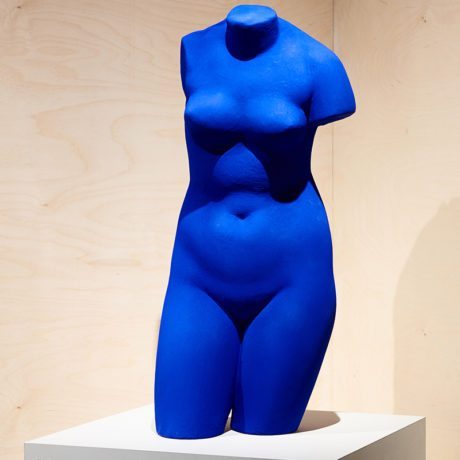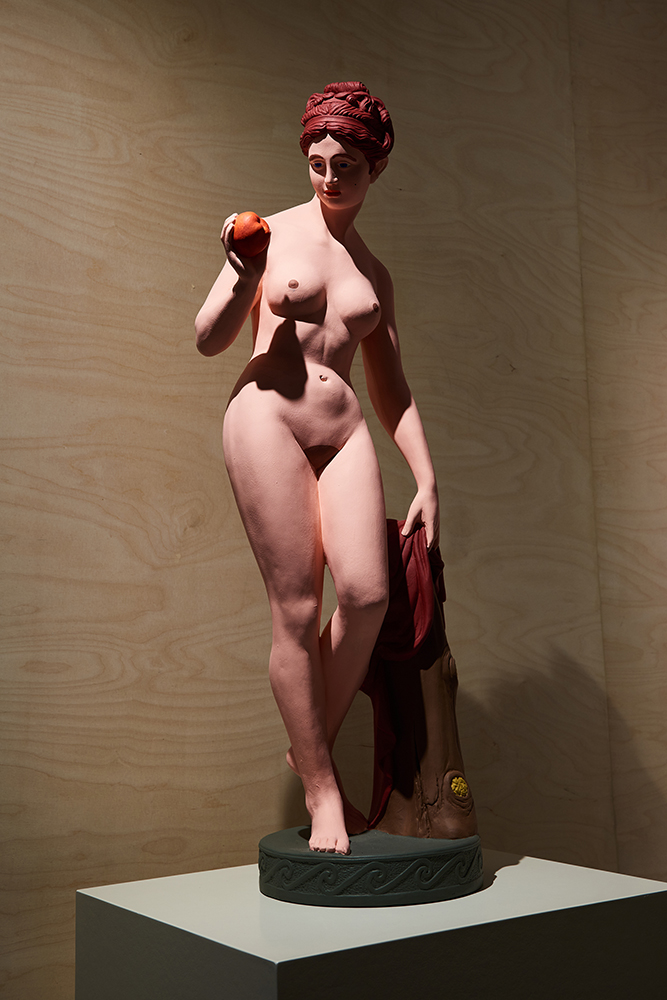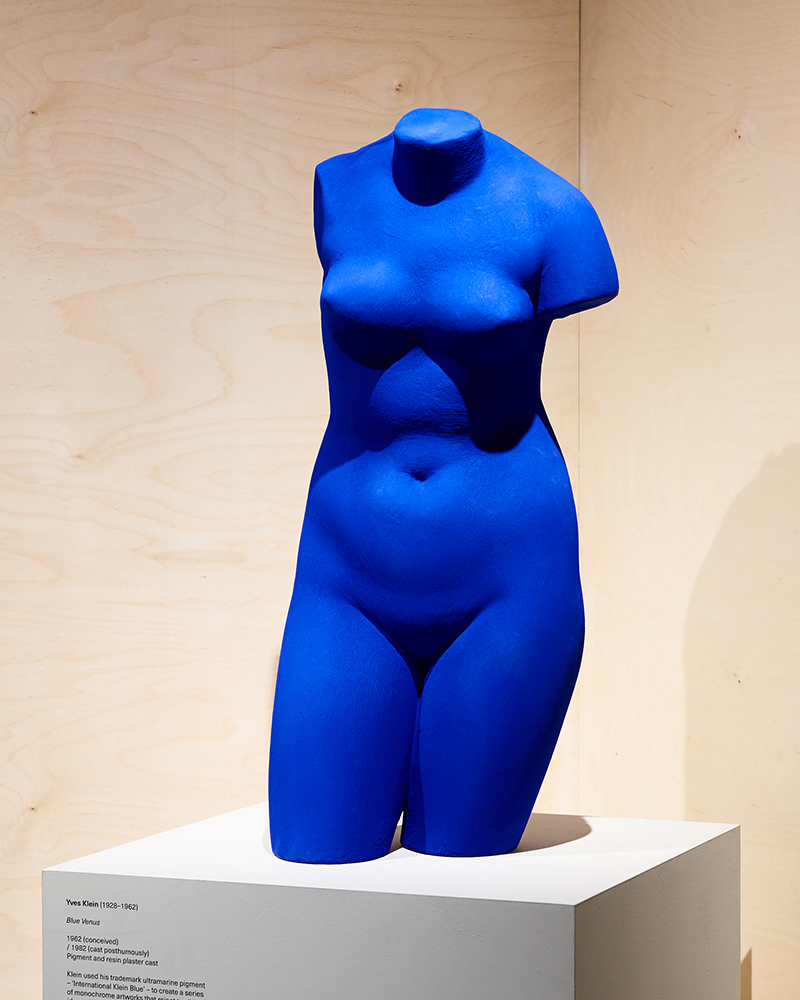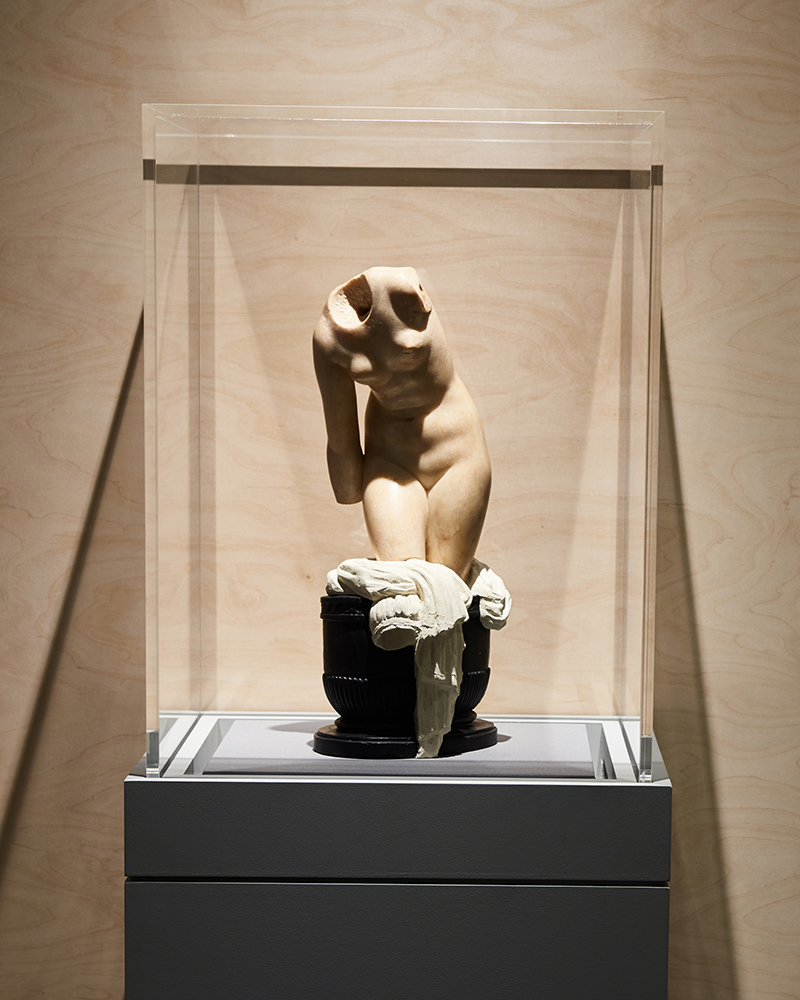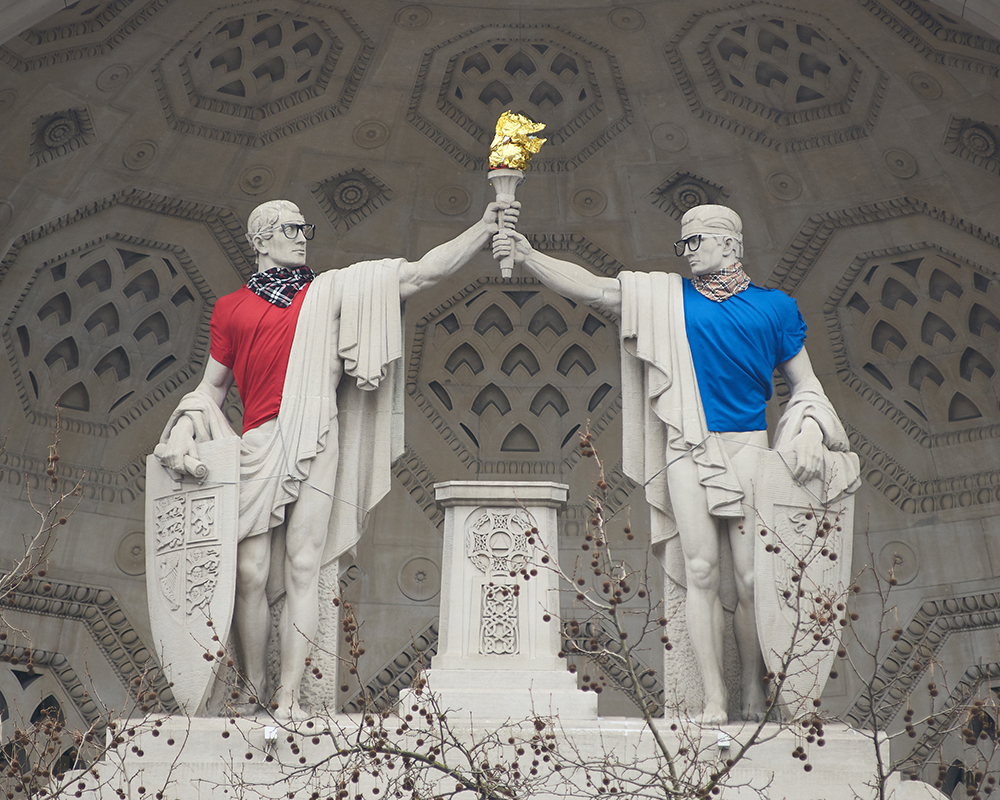
© Léo Caillard
Usually, when you see a statue decorated with thick-rimmed glasses, it is the result of some commonplace graffiti, so I wonder whether any passers-by have alerted the authorities to the “updated” classical sculptures that adorn Bush House on the Strand. Fortunately, concerned citizens can rest easy in the fact that these bespectacled male figures, complete with brightly coloured T-shirts and check scarves, are the result of a new commission by Léo Caillard. This is the latest addition in the artist’s Hipsters in Stone series, and the title “To the Friendship of the Classical and the Contemporary” foregrounds a new exhibition born out of major research at King’s College and Musée d’Art Classiques de Mougins, which studies the close relationship between classical art and contemporary visual culture.
The show is spread over two sites, Bush House and Somerset House, although the former has a more striking presence at street level, with an arresting full-sized cast by Marc Quinn displayed in the window. The sculpture combines two fractured bodies in a Frankenstein-esque whole, as masculine arms stretch around a lissom female torso. The surface is complete with pimples, veins and an almost pornographic imprint of genitalia, which wrenches references to historical classicism into the 21st century. This subversive work appeared, at least on my visit, to compel pedestrians to stop and survey, and some will hopefully make the somewhat courageous decision to cross the university threshold.
“A monstrous golden Medusa’s head is in no fear of being drowned out.”
Within the space itself great pains have been taken to convey the spirit of the Modern Classicisms research project, including something of a micro-display named Liquid Antiquities. This video installation shows contemporary artists discussing their relationship to the Benaki Museum’s permanent collection of antiquities, with some considerable divergence into their wider practices. These reflective, considered responses would probably benefit from a more meditative space, as the bustling throng of the university permeates through headphones.
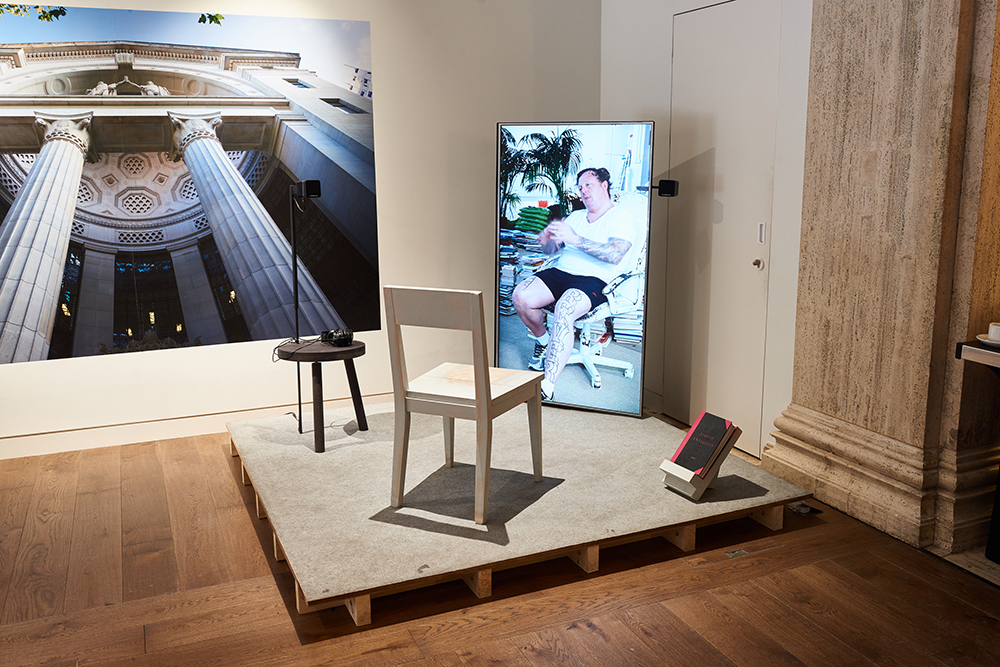
Conversely, a monstrous golden Medusa’s head is in no fear of being drowned out. The gasping face, crowned with vipers, was created as part of Damien Hirst’s controversial Venice exhibition Treasures from the Wreck of the Unbelievable, which brought parody and myth-making to new heights by fabricating an ancient excavation (at no small expense) and caused outcry among critics and the public alike. In this new setting, the sculpture seems more nuanced, and highlights our pop culture obsession with glamorous mythology and universal considerations around taste, vulgarity and wealth. Similarly, Sacha Sosno’s Le Bon Guetter questions our reverence towards Graeco-Roman sculpture by redacting most of the bronze bust’s features via a hollow rectangular frame. The artist’s quest to “obliterate art” reframed historical narratives as part of the Nouveau Réalisme movement, although he used interventionist methods as opposed to assemblages and ready-mades.
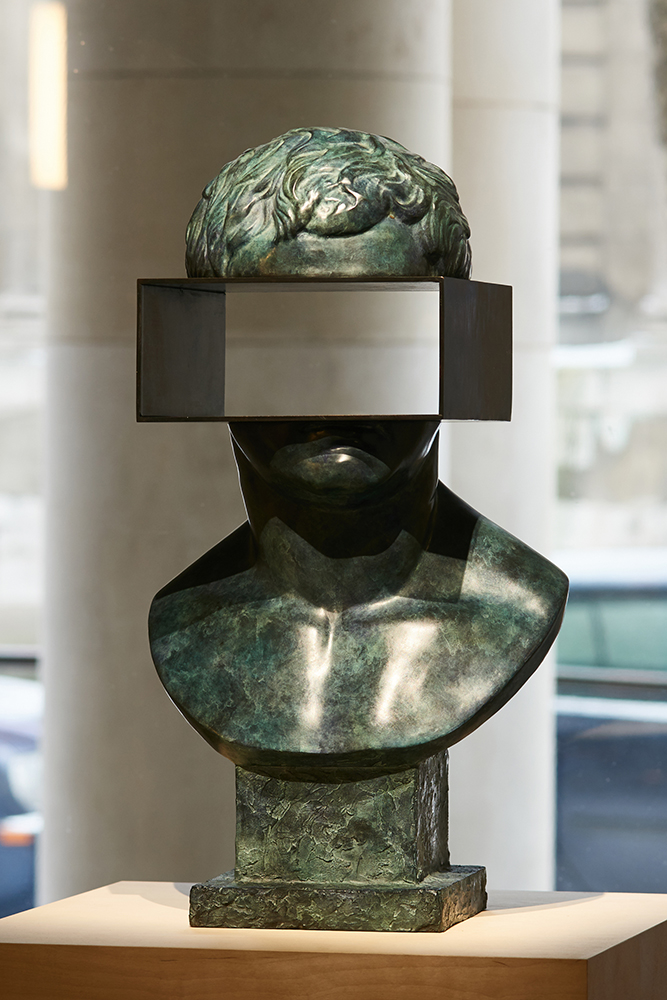
The grand master of the movement, Yves Klein, forms the apex of the second half of the exhibition, which is housed in subterranean galleries called the Inigo Rooms, situated in the East Wing of Somerset House. Klein’s stunning Blue Venus (S 41) features a classical nude doused in the artist’s trademark ultramarine pigment––International Klein Blue. This impossibly dense, rich colour radiates from the figure’s surface, creating an epically contemporary version of ancient sculpture, despite being conceived in the 1960s. Klein once referred to blue as a colour “beyond dimensions” and in this exhibition the statue seems to occupy an entirely different plane to the works surrounding it.
That being said, the adjacent works add to a particularly strong triad. Hans-Peter Feldmann redefines another nude through bombastic, kitsch overpainting, while a first-century sculpture of the torso of Venus is modernised by an eighteenth-century base. The addition of a discarded robe adds a flirtatious air to the otherwise classic motif. All three of these works have been displayed with reference to the overarching concept of “pose”. It is the strongest theme within the exhibition as a whole, particularly within sculptural work, as the visual language surrounding “contrapposto” (dynamic, uneven weight distribution that makes bodies appear alive) is so engrained in our general consciousness as relating to antiquity that we immediately make the connection and are free to consider further interventions within this context.
- Hans-Peter Feldmann, Untitled © Hans-Peter Feldmann.
- Yves Klein, Blue Venus (S41), 1962 (conceived)/ 1982 (cast posthumously) © Yves Klein Estate. ADAGP/DACS, 2018
- Statuette of Venus, first century AD © The Trustees of the British Museum
In other rooms architectural concerns are brought to the fore, such as Roy Lichtenstein’s interpretation of a ruined temple or Pablo Bronstein’s sketches of post-modern, fantastical structures. Mythological narratives are also rebooted in video works by Mark Reid Kelley and Ursula Mayer, but due to spatial limitations they seem somewhat suffocated, while the figurative sculptures thrive, due to the breathing space they command.
There is something inherently playful and subversive about redefining ancient statuary, and in an exhibition context it is undoubtedly the most successful theme. These “new” versions command our attention and inquiry, as there is something intrinsically alive and familiar about them. In these instances, contemporary intervention breaks the mould of classical expectation while simultaneously paying homage to it, and that relays the very essence of the research project as a whole.
The Classical Now is at King’s College, London until 28 April 2018
All images courtesy King’s College, London
